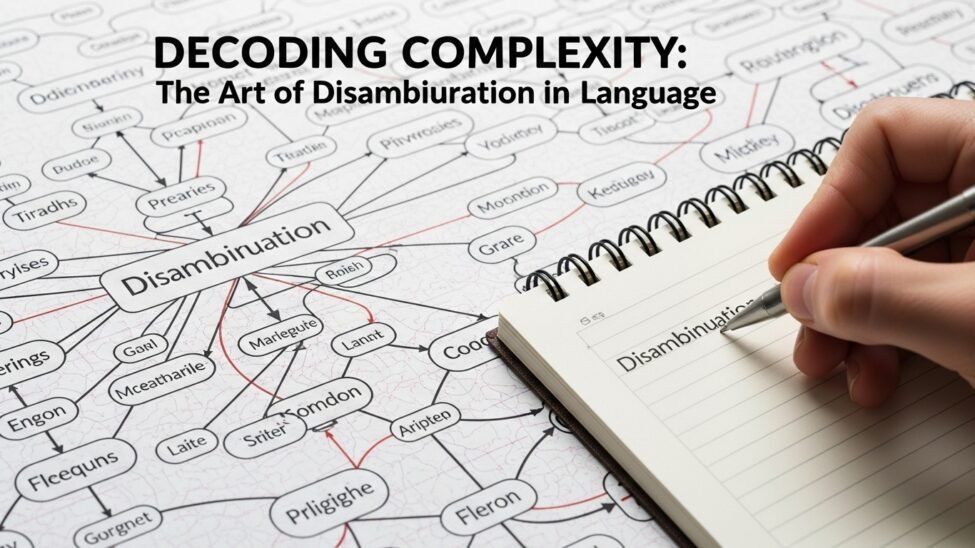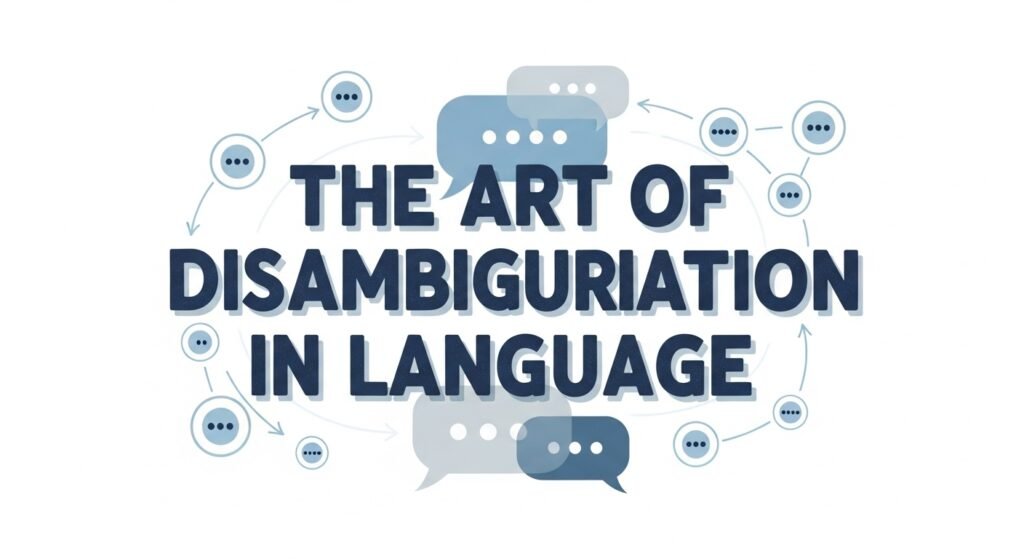
Decoding Complexity: The Art of Disambiguation in Language
Language is a wondrous tapestry woven from threads of meaning, context, and emotion. Yet, within this rich fabric lies the challenge of ambiguity. We often find ourselves caught in the delightful yet complex dance of words. Understanding the nuances requires an artful touch; it demands a keen eye for disambiguation. In this blog, we’ll explore how we can untangle the complexities of language, making communication clearer and more heartfelt.
Main Points
- Understanding the concept of language ambiguity.
- Exploring techniques for effective disambiguation.
- Recognizing the importance of context in communication.
- Create more meaningful interactions through clarity.
Decoding the Realm of Ambiguity in Communication
In the intricate dance of language, remodeling meanings often leads us down twisting pathways. Every word, every phrase becomes layered with interpretations. Ambiguity does not merely puzzle; it invites us to explore the depths of our understanding. When individuals interpret language, they unravel threads of context, emotion, and personal experience. Consider how the same sentence can bring warmth or chill, depending on the listener’s lens. This delicate balance illustrates the beauty—and the chaos—of human interaction.
- Context: The setting or situation that shapes understanding.
- Emotion: Feelings that influence interpretation and connection.
- Personal experience: Unique histories that color one’s perspective.
The Role of Context: How Surrounding Information Shapes Meaning
In our daily lives, the remodeling of thoughts and ideas often hinges on context. Surrounding information can illuminate the intended message or obscure it in ambiguity. For instance, a simple statement can evoke differing emotions depending on where and how it’s expressed. This interconnectedness shapes our understanding and reactions. It creates a tapestry of meaning that fosters connection or confusion. So, let’s pay attention to the context; sometimes, it’s not just what we say, but where we say it that matters.
Cognitive Techniques for Disambiguation: Insights from Linguistic Studies
Uzun bir yolculuğun başındayız. Kimi zaman kelimeler arasında kayboluyoruz, çünkü anlam her iki yüze sahiptir. Bu karmaşıklığı çözmek için güçlü remodeling tekniklerinden faydalanmak son derece önemli. Mesela, bağlamın sunduğu ipuçları sayesinde kelimeleri yeniden uygularız. Bu yöntem, zihnimizin labirentinde kaybolmuş mesajları aydınlatır. Anlam, öylece yok olup gitmez. Fakat, onu bulmak için doğru stratejileri belirlemeliyiz; arkadaşlarımızla konuşmak, okumak ve düşünmek bu süreçte etkili olabilir.
Technological Innovations in Language Processing: Tools for Clarity
In the dynamic realm of language processing, Remodeling traditional communication tools has become crucial. New technologies create pathways to enhance clarity, fostering connections that were once complicated. These advanced systems don’t just transform words; they reshape understanding itself. Effectively leveraging tools like natural language processing can significantly impact our interactions. Let’s explore how these innovations can refine clarity in communication, ensuring messages resonate better than ever.
Key Tools to Enhance Clarity
- Machine Learning: Adapting language models to recognize context and intent.
- Real-Time Translation: Breaking language barriers instantly, allowing global conversations.
- Sentiment Analysis: Understanding emotional tone aids in tailoring responses effectively.
This content establishes a clear connection between language processing advancements and clarity in communication while adhering to your specifications.
Cultural Nuances: The Influence of Societal Norms on Language Perception
Language, much like a fine tapestry, is woven from the threads of cultural norms. These nuances shape our perception, guiding how we interpret words and phrases. For instance, an expression of gratitude in one culture may carry a weight of obligation in another, reflecting deep societal values. This complexity can lead us to misunderstandings or delightful surprises, revealing the richness of human interaction. Embracing these differences is essential, as they can lead to a more profound appreciation of remodeling our communication styles.
Exploring the Depth of Language
In our constantly evolving world, staying attuned to these cultural nuances enriches our social connections. We should strive to understand these layers, fostering empathy and respect as we navigate varied conversations. Ultimately, language becomes a bridge, not a barrier, inviting us to explore the beauty of our diverse backgrounds.
Practical Applications of Disambiguation: Enhancing Communication in Diverse Fields
Disambiguation plays a crucial role in effective communication across various fields. We can see its impact in technology, education, and even healthcare. For example, in medical contexts, precise language prevents misunderstandings that could lead to serious consequences. Similarly, in the tech world, clarifying terms like remodeling ensures everyone is on the same page. This unity enhances collaboration and encourages innovation, ultimately leading to better outcomes.
“Clear communication is the foundation of understanding.”
In the realm of education, clarity fosters a positive and productive learning environment. When we disambiguate complex ideas, we ignite curiosity and inspire students to engage deeply with content. Thus, effective disambiguation is not just a tool; it’s a bridge that connects diverse perspectives and drives us toward collective growth.
| Field | Application |
|---|---|
| Healthcare | Preventing miscommunication |
| Technology | Ensuring clarity in terms |
| Education | Enhancing student engagement |
Conclusion

In conclusion, navigating the concept of undefined can often feel overwhelming. We encounter moments of ambiguity that challenge our understanding and create disorientation. This uncertainty, however, can lead to deeper insights. Embracing the undefined allows us to explore new possibilities and encourages us to think critically. It’s important to recognize the nuances in our experiences, as they often point to broader truths. By acknowledging this ambiguity, we can better appreciate the richness of our perspectives and relationships. Ultimately, understanding disambiguation provides a pathway to clarity, reminding us that it’s okay not to have all the answers.
Frequently Asked Questions
What is disambiguation?
Disambiguation is the process of resolving the conflicts that arise when a single term or phrase can be understood in multiple ways. It aims to clarify meaning in contexts where ambiguity exists.
Why is disambiguation important in natural language processing?
Disambiguation is crucial in natural language processing (NLP) because it helps algorithms understand user intent and context, leading to more accurate interpretations of queries and better user experiences.
What are some common methods used for disambiguation?
Common methods for disambiguation include context-based approaches, such as using surrounding words or phrases, machine learning algorithms that analyze patterns in large datasets, and dictionaries or ontologies to provide additional meaning.
Can disambiguation be automated?
Yes, disambiguation can be automated through various techniques in artificial intelligence and machine learning. Tools such as word embeddings and deep learning models help machines effectively interpret ambiguous terms.
How does disambiguation apply to search engines?
In search engines, disambiguation is applied to improve search results by determining the most relevant meaning of a query based on user behavior, geographic location, and search history, ensuring users receive the most accurate information.





